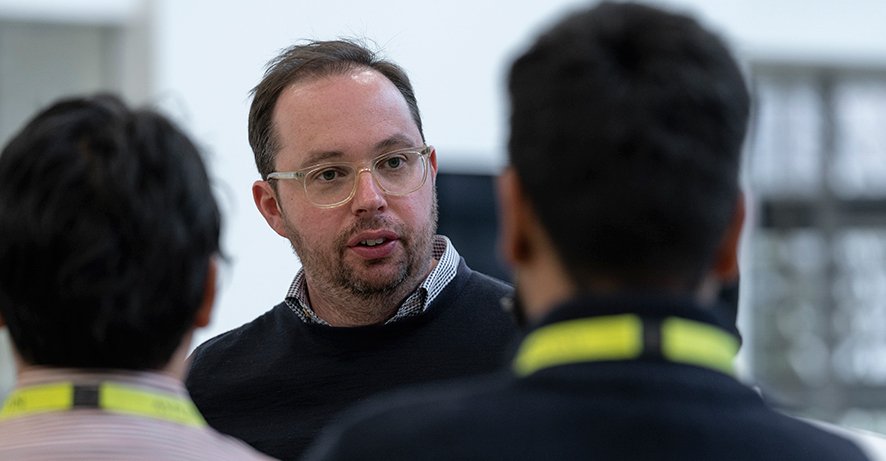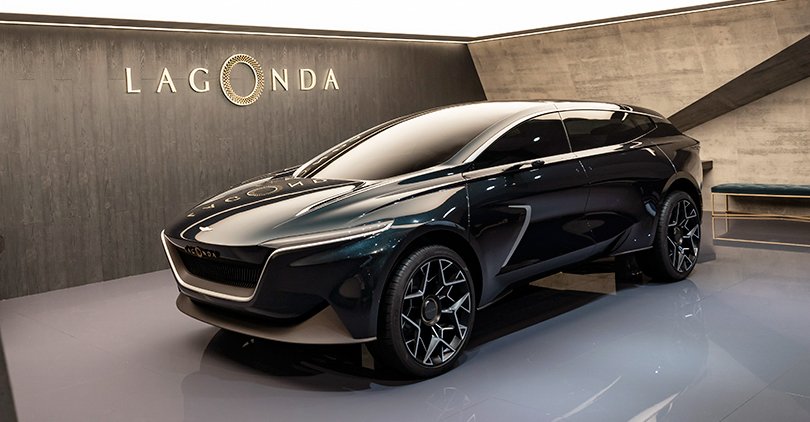Second Century Plan: Aston Martin's new lease of life
18 Mar 2019|8,356 views
Over the past two days, I've been hearing the term 'Second Century Plan' more times than I can count.

To date, four of the seven vehicles have been completed. The first was the DB11, followed by the Vantage and the DBS. The latest to join the pack will be the DBX, which is slated to arrive in Singapore mid of next year.
The remaining three vehicles will be the production version of the Vanquish Vision Concept that was unveiled recently at the Geneva Motor Show, a Lagonda SUV and a Lagonda four-door saloon.
This strategy was announced back in 2015 - just half a year after Andy Palmer, President and Group Chief Executive Officer of Aston Martin, took the helm of the carmaker.

"Aston Martin has been selling 7,000 sports cars a year. However, once the Second Century Plan has completed and all the core models have gone into production, we are targeting the sales volume to double to 14,000 vehicles a year," Nikki mentioned.
More than just producing car models, the Second Century Plan also encompasses the opening of a second manufacturing plant to complement the currrent Gaydon facility in Warwickshire.
This plant, which is located in St Athan, Wales, will see to the production of the first SUV, the DBX, and its first electric cars under the new Lagonda nameplate.
The Lagonda brand, which comes under luxury automotive group Aston Martin Lagonda, is targeted to be relaunched as the world's first luxury electric vehicle company in 2021.
Seems like quite an ambitious plan, indeed, especially when you consider that Aston Martin isn't one of those car companies that's backed by a larger automotive group such as Geely or Volkswagen.
This could potentially lead to funding challenges, not only for the new manufacturing facility - of which it has been partially completed - but also for the development of new vehicles.
Still, even if the carmaker has gotten its fundings set right, with its $200 million pounds secured from investors and shareholders, it seems like there could be a series of challenges to come.
Considering that the luxury SUV market has recently become crowded with new entrants such as the Bentley Bentayga, the Lamborghini Urus, the Maserati Levante and the Rolls-Royce Cullinan, the crucial test will be the DBX's degree of success, methinks.

Nevertheless, the indication of expansion plans from Aston Martin doesn't end there. At the recent motor show in Geneva, the carmaker has officially announced that the Vanquish Vision Concept will feature a version of its very own V6 hybrid turbocharged engine.
This will be the first engine produced in-house since 2013 when Aston Martin formed a technical partnership with Mercedes-AMG - the fully-owned subsidiary and high-performance arm of Daimler AG. The partnership will allow Aston Martin to access Mercedes-AMG's engines and certain components of its electric architecture.
Some of the cars that are utilising the said powerplants are the Vantage sports car as well as the DB11 grand tourer.
Just as steel can be forged in a furnace, greatness can be produced by adversity. Who knows? Aston Martin may just become one of the greatest carmakers with this well-forged strategy.
Over the past two days, I've been hearing the term 'Second Century Plan' more times than I can count.

To date, four of the seven vehicles have been completed. The first was the DB11, followed by the Vantage and the DBS. The latest to join the pack will be the DBX, which is slated to arrive in Singapore mid of next year.
The remaining three vehicles will be the production version of the Vanquish Vision Concept that was unveiled recently at the Geneva Motor Show, a Lagonda SUV and a Lagonda four-door saloon.
This strategy was announced back in 2015 - just half a year after Andy Palmer, President and Group Chief Executive Officer of Aston Martin, took the helm of the carmaker.

"Aston Martin has been selling 7,000 sports cars a year. However, once the Second Century Plan has completed and all the core models have gone into production, we are targeting the sales volume to double to 14,000 vehicles a year," Nikki mentioned.
More than just producing car models, the Second Century Plan also encompasses the opening of a second manufacturing plant to complement the currrent Gaydon facility in Warwickshire.
This plant, which is located in St Athan, Wales, will see to the production of the first SUV, the DBX, and its first electric cars under the new Lagonda nameplate.
The Lagonda brand, which comes under luxury automotive group Aston Martin Lagonda, is targeted to be relaunched as the world's first luxury electric vehicle company in 2021.
Seems like quite an ambitious plan, indeed, especially when you consider that Aston Martin isn't one of those car companies that's backed by a larger automotive group such as Geely or Volkswagen.
This could potentially lead to funding challenges, not only for the new manufacturing facility - of which it has been partially completed - but also for the development of new vehicles.
Still, even if the carmaker has gotten its fundings set right, with its $200 million pounds secured from investors and shareholders, it seems like there could be a series of challenges to come.
Considering that the luxury SUV market has recently become crowded with new entrants such as the Bentley Bentayga, the Lamborghini Urus, the Maserati Levante and the Rolls-Royce Cullinan, the crucial test will be the DBX's degree of success, methinks.

Nevertheless, the indication of expansion plans from Aston Martin doesn't end there. At the recent motor show in Geneva, the carmaker has officially announced that the Vanquish Vision Concept will feature a version of its very own V6 hybrid turbocharged engine.
This will be the first engine produced in-house since 2013 when Aston Martin formed a technical partnership with Mercedes-AMG - the fully-owned subsidiary and high-performance arm of Daimler AG. The partnership will allow Aston Martin to access Mercedes-AMG's engines and certain components of its electric architecture.
Some of the cars that are utilising the said powerplants are the Vantage sports car as well as the DB11 grand tourer.
Just as steel can be forged in a furnace, greatness can be produced by adversity. Who knows? Aston Martin may just become one of the greatest carmakers with this well-forged strategy.
Thank You For Your Subscription.


























